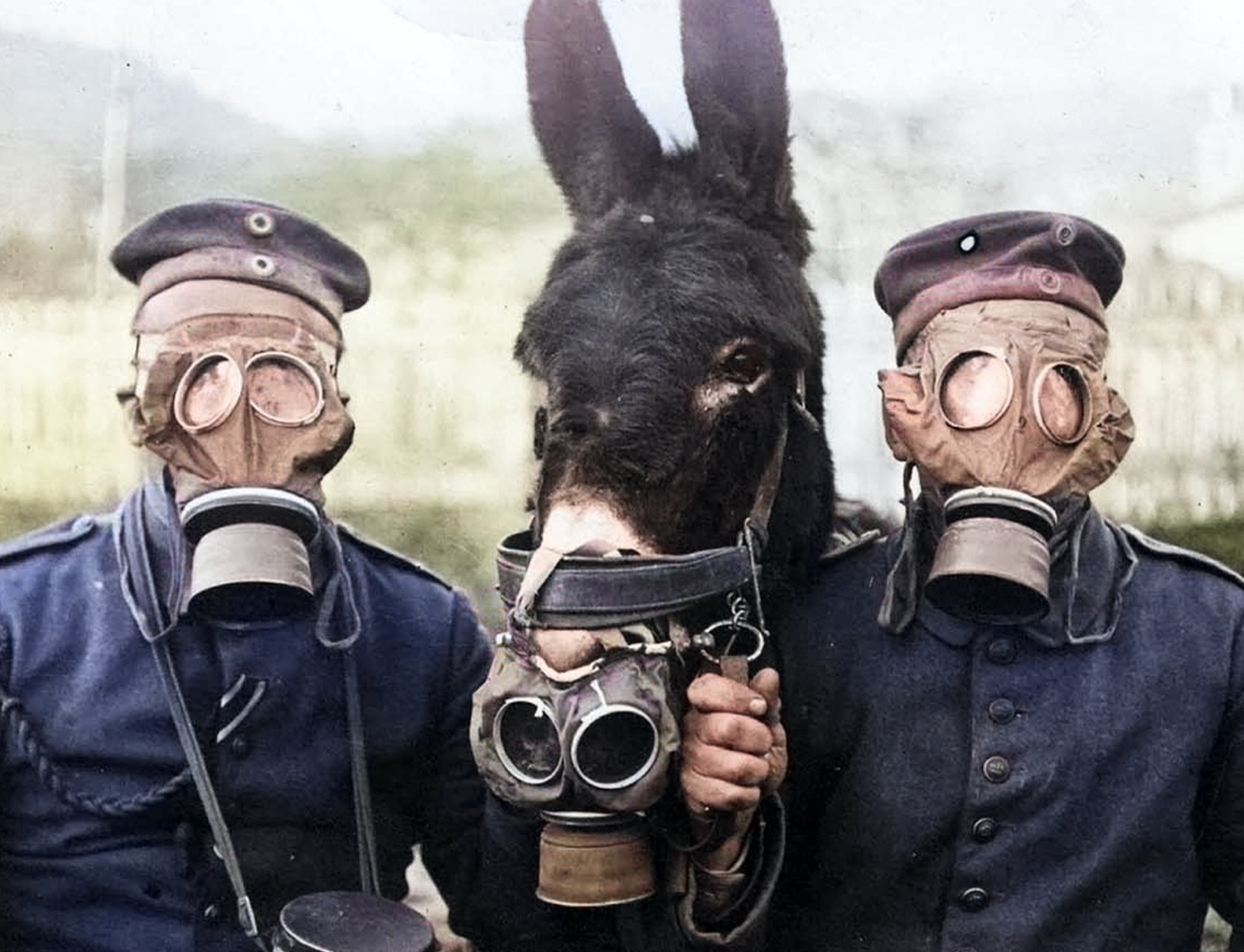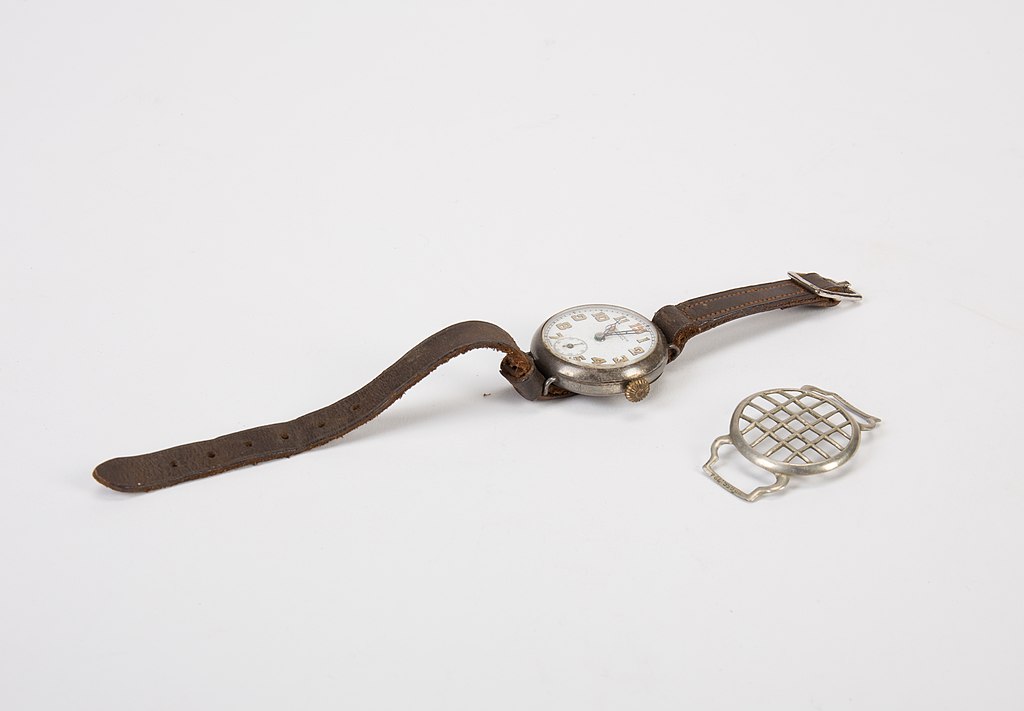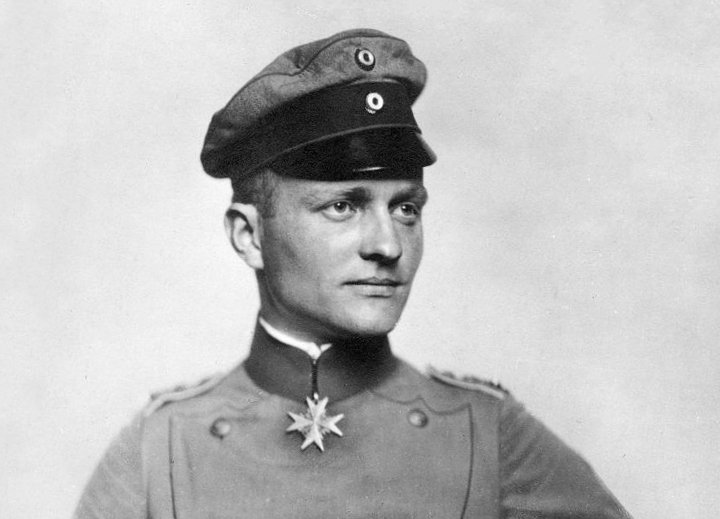Inventions To Come Out Of WWI
One of the more difficult realities is that there is a great deal of innovation that comes out of human conflict. From medical to technological advances, conflicts create a need and will often accelerate the development of products we now use every day. Here are some of the inventions that came out of WWI.

Trench Coats
Even though the name may be a giveaway, it is still surprising that the trench coat is a product of WWI.
First becoming popular among British officers, the coats were functional and practical. The coats were heavier than the light overcoats used by enlisted men and they were cut well to allow for ease of movement.
 Auckland Museum, CC BY 4.0, Wikimedia Commons
Auckland Museum, CC BY 4.0, Wikimedia Commons
Trench Coats
Since they were waterproof, they were ideal for the conditions in the trenches as opposed to wool. They also featured enough pockets, flaps, and rings to carry various pieces of equipment and within a month of the start of WWI, London retailers were selling trench coats to the general public.
 Vilho Uomala, CC BY 4.0, Wikimedia Commons
Vilho Uomala, CC BY 4.0, Wikimedia Commons
Daylight Saving Time
A familiar nuisance to most of us, the idea of shifting time goes back centuries during different time periods. However, it was WWI where Daylight Saving Time was first standardized for an entire population. In April 1916, Germany enacted Daylight Saving Time to give people an extra hour of daylight in the evening, thus saving much-needed coal.
 Georg Pettendorfer, Wikimedia Commons
Georg Pettendorfer, Wikimedia Commons
Daylight Saving Time
The idea caught on and soon the UK and other European countries followed suit.
In 1918, the United States implemented Daylight Saving Time. And despite what most people seem to think, implementing Daylight Saving Time has nothing to do with farmers (who actually opposed implementing Daylight Saving Time)—it has always been about conserving energy.
 foundin_a_attic, CC BY 2.0, Wikimedia Commons
foundin_a_attic, CC BY 2.0, Wikimedia Commons
Blood Banks
Although the medical knowledge was there, blood transfusions prior to WWI were rare, other than directly between two people.
Because of the lack of reliable refrigeration, the shelf life of stored blood was too short. With improvements to electric refrigeration, the US and British armies established the first blood bank in 1917 on the Western Front.
 Wellcome Collection gallery, Wikimedia Commons
Wellcome Collection gallery, Wikimedia Commons
Blood Banks
Having blood available so close to the wounded at the front saved countless lives.
Blood could be kept in storage for up to 28 days, while sodium citrate was added to prevent clotting.
 adjudant.ru, Wikimedia Commons
adjudant.ru, Wikimedia Commons
Sanitary Pads
During a tour of the Western Front in 1914, executives from Kimberly-Clark, an American paper company, discovered a material made from pulp that was five times more absorbent than cotton and far cheaper and easier to produce.
The short supply of cotton during WWI meant this new material, called Cellucotton, could be used for surgical dressing.
 Auckland Museum, CC BY 4.0, Wikimedia Commons
Auckland Museum, CC BY 4.0, Wikimedia Commons
Sanitary Pads
Once used on the wounded at the front, infection rates went down as doctors and nurses had a steady supply of Cellucotton. Nurses at the Red Cross, while treating patients, discovered another use for Cellucotton—makeshift sanitary pads. After WWI, they were marketed to women under the name Kotex. A thinner and flattened version was also marketed as a makeup remover called Kleenex.
 KingaNBM, CC BY-SA 4.0, Wikimedia Commons
KingaNBM, CC BY-SA 4.0, Wikimedia Commons
Stainless Steel
The British government was searching for harder alloys for arms during WWI, in an attempt to make them less damaged from the heat and friction.
English metallurgist Harry Brearley added chromium to molten iron and it produced steel that wouldn’t rust. This new type of steel was marketed after WWI as stainless steel with myriad applications in industry and the home.
Wristwatches
Before WWI, pocket watches were the standard portable timekeepers for men, while the wristwatch was used mainly by women.
Pocket watches proved to be impractical for fighting in the trenches. Wristwatches allowed access to precise time without fumbling around in the pockets and are useful for freeing up both hands of aviators. After WWI, the wristwatch became a standard accessory for men.
 Auckland Museum, CC BY 4.0, Wikimedia Commons
Auckland Museum, CC BY 4.0, Wikimedia Commons
Zippers
The term “zipper” wasn’t coined until 1923 when the BF Goodrich Company began production of the new fastener. However, the “hookless fastener” was developed by Gideon Sundback during WWI. The first use of zippers was for money belts worn by enlisted men whose uniforms lacked pockets.
Buttons remained standard for uniforms during WWI but zippers were in particular used for the flying suits of aviators.
 Auckland Museum, CC BY 4.0, Wikimedia Commons
Auckland Museum, CC BY 4.0, Wikimedia Commons
Drones
Only 15 years after Orville Wright’s first flight with the Wright Brothers’ airplane, he worked with the US forces and their experiments with unmanned aircraft. In 1918, an unmanned aerial torpedo was successfully tested with the ability to strike a target at a distance of 75 miles. Featuring a papier-mâché fuselage and cardboard wings, the torpedo relied on a barometer and gyroscope for guidance, but WWI ended before it could be tested in battle conditions.
 Greg Hume, CC BY-SA 3.0, Wikimedia Commons
Greg Hume, CC BY-SA 3.0, Wikimedia Commons
Barbed Wire
Barbed wire was used exclusively by ranchers and farmers to keep livestock from wandering away.
Its use as a human barrier was only developed in WWI, with barbed wire being used in front of trenches to funnel the enemy into the line of fire. Enemy forces attempting to cross the barbed wire would be ensnared, making them easy to target.
 Opittman, CC BY 4.0, Wikimedia Commons
Opittman, CC BY 4.0, Wikimedia Commons
Sun Lamps
One serious consequence of WWI was on the homefront.
During the winter of 1918, half the children of Berlin were said to be suffering from rickets, a condition where the bones become soft and malformed. The exact cause wasn’t known at the time but it seemed to be concentrated mostly on those living in poverty.
 Deutsche Fotothek, CC BY-SA 3.0, Wikimedia Commons
Deutsche Fotothek, CC BY-SA 3.0, Wikimedia Commons
Sun Lamps
A German doctor, Kurt Huldschinsky, noticed that his patients with rickets were also very pale.
Using four children as test subjects, Huldschinsky put them under ultraviolet light from mercury-quartz lamps and he noticed that their bones began to strengthen. By the end of WWI, children with rickets were recovering and sun lamps for therapeutic purposes went into development.
 Deutsche Fotothek, CC BY-SA 3.0, Wikimedia Commons
Deutsche Fotothek, CC BY-SA 3.0, Wikimedia Commons
Tea Bags
Tea bags predate WWI by a few years when an American company began sending its tea to customers in mesh bags.
At some point, people began to drop those bags into water to avoid straining the loose tea leaves when pouring. However, there is a WWI connection to the tea bag.
 Achim Raschka, CC BY-SA 3.0, Wikimedia Commons
Achim Raschka, CC BY-SA 3.0, Wikimedia Commons
Tea Bags
A German company, Teekanne, took that idea and developed it further. Realizing it was more efficient to send tea to the trenches in small cotton bags ready to be steeped, Teekanne invented the idea of the individual tea bag that we know today.
Vegetarian Sausages
Soy-based meat substitutes go back a lot farther than people may think, certainly long before the health crazes that coincided with the hippy movement in the 1960s. Soy meat substitutes, specifically soy sausages, were invented by Konrad Adenauer, whose other claim to fame was as the first chancellor of West Germany after WWII.
 Peter Bouserath, CC BY-SA 3.0, Wikimedia Commons
Peter Bouserath, CC BY-SA 3.0, Wikimedia Commons
Vegetarian Sausages
During WWI, Adenauer was mayor of the German city of Cologne and as the Allied blockade took its toll on the general population, starvation became a reality.
Looking for food substitutes, experimenting with different flours to replace wheat and likewise, he came upon soy as a substitute for meat in sausages.
 Sargoth, CC BY-SA 3.0, Wikimedia Commons
Sargoth, CC BY-SA 3.0, Wikimedia Commons
Vegetarian Sausages
They were dubbed the Friedenswurst, or “peace sausages”, and Adenauer applied for a patent in Germany but was denied one—German regulations stipulated that sausages had to contain meat. After WWI, Adenauer took his invention to Britain where a patent was granted and the vegetarian meat industry was born.
Pilot Communications
There was no way for pilots in aircraft to talk to anyone else at the beginning of WWI. For the most part, cables were the standard form of communication between headquarters and the front. These were only useable on the ground and were always at risk of being sabotaged. Other means of communication were used, from pigeons to signal flags, lamps, and dispatch riders, but few of these were of any use to pilots.
 Deseronto Archives, Wikimedia Commons
Deseronto Archives, Wikimedia Commons
Pilot Communications
For the most part, aviators had to use hand gestures, and even shouting, to communicate with each other or with those on the ground. Radio technology was already available but it, too, required a land-based system of transmitters. Wireless radio went into accelerated development in Britain at the start of WWI.

Pilot Communications
By 1916, steps toward wireless radio for airplanes had been made. Due to noise, earlier attempts to install radio telephones in aircraft failed. In the end, a special helmet with earphones and a microphone was created and much of the noise was muted. Person-to-person radio communication in the air had arrived.
 Deseronto Archives, Wikimedia Commons
Deseronto Archives, Wikimedia Commons
Air Combat
In 1903, Orville Wright flew the airplane he built with his brother, staying airborne for 12 seconds. Just 11 years later, airplanes were now being used in WWI. At first, airplanes were used for reconnaissance and spying. As this became more common, each side tried to develop ways of downing the enemy aircraft.
 Deseronto Archives, Wikimedia Commons
Deseronto Archives, Wikimedia Commons
Air Combat
Rather than arms, early WWI airplanes were equipped with cameras. However, as reconnaissance flying became more hazardous, aviators began to arm themselves. When enemy aircraft encountered each other in midair, they would attempt to shoot each other down, targeting not the planes themselves, but the pilots.
 Deseronto Archives, Wikimedia Commons
Deseronto Archives, Wikimedia Commons
Air Combat
Soon technology was developed to mount automatic arms on airplanes.
As the pilot had to fly the plane and operate the arms, the key innovation was the development of automatic arms that could be fired through the rotating propellor. As pilots became more experienced, they also became more daring and battles in the air began to take place, with fights between two airplanes becoming known as “dogfights”.
 Deseronto Archives, Wikimedia Commons
Deseronto Archives, Wikimedia Commons
Air Combat
Air battles in WWI became highly romanticized.
Far above the mud and misery of the trenches, pilots fought “clean” battles, seen as more duels than anything else, and “flying aces”, as they became known, captured the imagination of civilians at home. These flying aces became famous, with figures like Germany's Manfred von Richthofen (aka 'The Red Baron'), American Eddie Rickenbacker, and Canada's Billy Bishop being celebrated and immortalized.
 Nicola Perscheid, Wikimedia Commons
Nicola Perscheid, Wikimedia Commons
Tanks
Tanks are a fairly common sight in most conflicts but they did not exist prior to WWI.
The trench fighting in WWI had become a stalemate, with both sides separated by a thin strip of no-mans-land. Thousands of lives were lost with the hopeless advancing and retreating that took place, trying to break through the enemy’s lines.
 Erky-Nagy Tibor, CC BY-SA 3.0, Wikimedia Commons
Erky-Nagy Tibor, CC BY-SA 3.0, Wikimedia Commons
Tanks
Both sides were developing an idea of armored vehicles as a way to end this stalemate once and for all.
The British introduced a number of armored vehicles which were at first called “landships”. To keep this development secret, British authorities officially designated these vehicles as a means to transport water to their Russian allies in the east; they were supposedly mobile water tanks. They were marked as “tanks” as part of this ruse.
 Ernest Brooks, Wikimedia Commons
Ernest Brooks, Wikimedia Commons
Tanks
These tanks were first used in September 1916, during the Battle of the Somme, and soon other nations were building them. Although the early versions were cumbersome and prone to breakdowns and getting stuck in the mud, they eventually proved decisive in helping to end the stalemate of trench fighting.
Armored units now had a permanent place in modern conflicts.
Chemical Arms
Not all innovations to come from WWI had positive peacetime applications and chemical arms are definitely something we would be better off without. A common sight in depictions of the trench fighting in WWI is men in gas masks.
Even horses, still heavily in use during WWI, had gas masks designed for them.
 Unknown Author, Wikimedia Commons
Unknown Author, Wikimedia Commons
Chemical Arms
Germany was the first nation to use chemical arms. They used chlorine gas at Ypres in Belgium in April 1915, against the French. Other chemicals were used by 1917 and both sides were now employing mustard gas. Mustard gas is a carcinogen and there is no preventative agent against mustard gas and no antidote exists for mustard gas exposure.
 Unknown Author, Wikimedia Commons
Unknown Author, Wikimedia Commons
Chemical Arms
Victims of mustard gas suffered horribly. Mustard gases form blisters on exposed skin and in the lungs, often resulting in prolonged illness usually leading to loss of life. In WWI, historians estimate 90,000 lives lost with another 1 million injured. With gas masks, the effects of mustard gas could be prevented but the unpredictable nature of a chemical attack meant winds could plow the substance back at the attackers.
 Komlós Péter, Wikimedia Commons
Komlós Péter, Wikimedia Commons
Chemical Arms
The use of chemical arms was widely condemned and in 1925, the Geneva Protocol treaty was the first to ban the use of chemical arms in any conflict. Other bans would go into effect over the years, but a ban was only as effective as the willingness of all sides to abide by it.
Chemical arms continue to be used by rogue states and terrorist groups.
 National Archives and Records Administration, Wikimedia Commons
National Archives and Records Administration, Wikimedia Commons
Submarines
Submarines have a lengthy history, going back to the late 18th century and experiments with diving bells. The use of mobile underwater ships developed with submersible vessels attacking enemy ships was attempted as far back as the American Revolution.
The US Civil War saw an increase in the use of submarines, although the vessels were crude and incredibly dangerous, with casualties usually coming more from accidents and malfunctions than from the enemy.
 American official photographer, Wikimedia Commons
American official photographer, Wikimedia Commons
Submarines
It was Germany who first utilized submarines in WWI, and they were effectively employed in the Atlantic to attack Allied shipping.
Submarine attacks on non-combatant ships also contributed to the entry of the neutral United States into WWI, which arguably hastened the end of the conflict at Germany’s expense. When German submarines sank the British ocean liner RMS Lusitania off the Irish coast in May 1915, the loss of lives was around 1,200, including 128 Americans.
 Archives State Agency, Wikimedia Commons
Archives State Agency, Wikimedia Commons
Submarines
This attack outraged the Americans and by 1917, after further attacks on US vessels, America entered WWI against the German Empire.
With the loss of Russia in the east, due to the Russian Revolution and the abdication of the Tsar, the fighting shifted mainly to the Western Front. With the addition of the Americans to the Allied effort, the tide of the conflict turned against Germany.
 Unknown Author, Wikimedia Commons
Unknown Author, Wikimedia Commons
Pilates
Pilates sounds like something invented fairly recently but it actually goes back to WWI.
Joseph Hubertus Pilates was a German bodybuilder who lived in the United Kingdom. He was interned as an enemy alien after the outbreak of WWI. During his three years of captivity, and without his exercise equipment, Pilates developed a muscle-strengthening technique that used slow and precise stretching and physical movements.
Pilates
His technique was utilized for bed-ridden internees by creating a system of springs and straps that allowed for resistance training. After WWI, Pilates returned to Germany and worked with experts in dance and physical exercise. Moving to the US in 1925, Pilates and his wife established a studio in New York City where they taught the Pilates techniques well into the 1960s.














